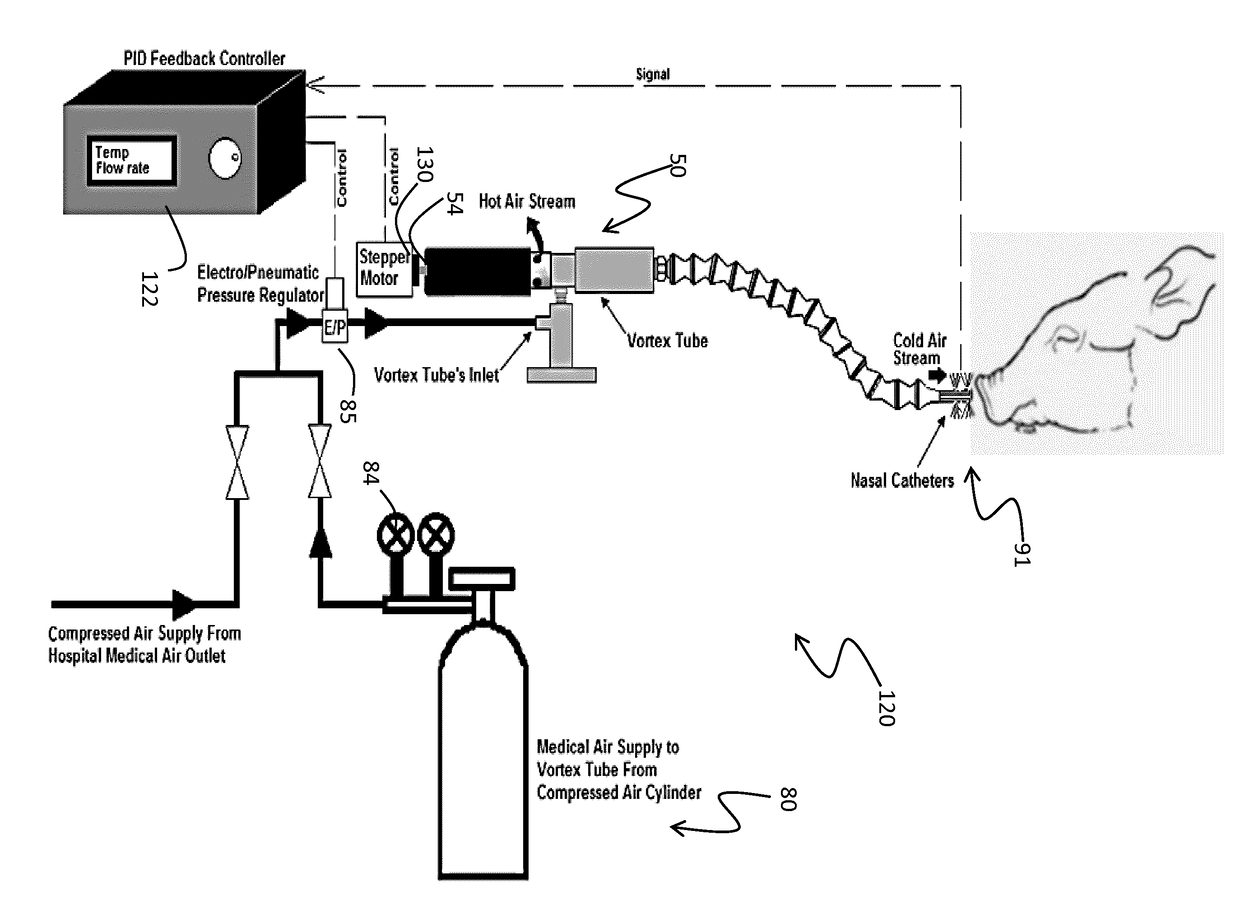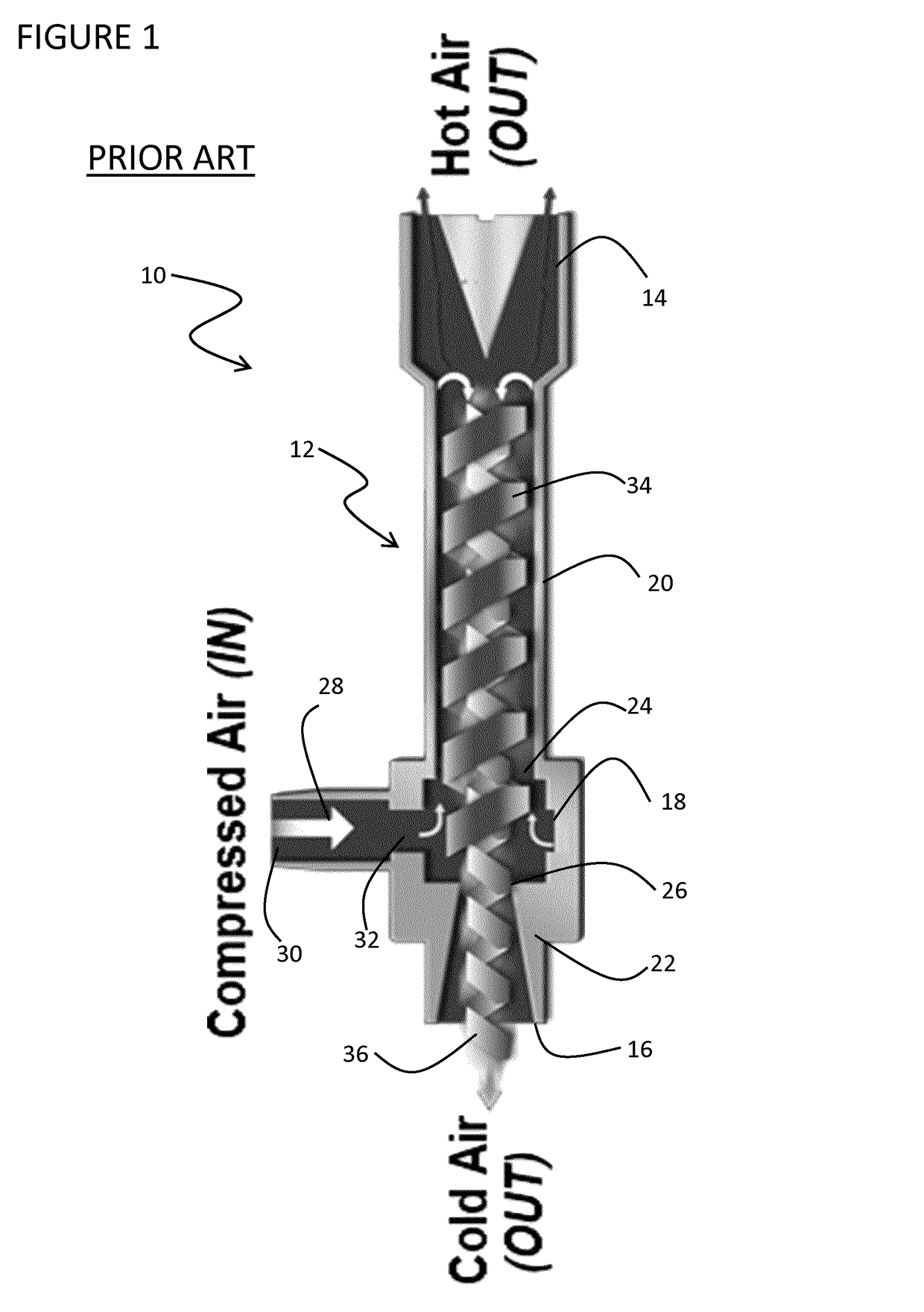Mammalian head cooling system and method
a cooling system and mammalian head technology, applied in the field of mammalian head cooling system, can solve the problems of skin erythema, renal failure, coagulopathy, myocardial ischemia, etc., and achieve the effect of reducing neurodegeneration
- Summary
- Abstract
- Description
- Claims
- Application Information
AI Technical Summary
Benefits of technology
Problems solved by technology
Method used
Image
Examples
Embodiment Construction
[0036]Now referring to the drawings, a head cooling system will be described. The head cooling system comprises a source of compressed breathable gas, a cooled gas generator, and an interface for delivering cooled gas through a nasal orifice, and optionally through an oral orifice of a subject. The head cooling system may be used therapeutically or prophylactically. The cooling system will typically be capable of achieving a brain temperature of less than about 34 degrees Celsius with a brain versus rectal temperature difference of greater than about 4 degrees Celsius.
[0037]The source of compressed breathable gas may be an electrical compressor or a tank or combinations thereof. Such sources are readily available in hospital and emergency first responder settings. A breathable gas includes oxygen generally at a partial pressure of oxygen of about 16 kiloPascals (0.16 bar) to 180 kiloPascals (1.80 bar) at ambient pressure. A breathable gas will typically have a volume fraction of oxy...
PUM
 Login to View More
Login to View More Abstract
Description
Claims
Application Information
 Login to View More
Login to View More - R&D
- Intellectual Property
- Life Sciences
- Materials
- Tech Scout
- Unparalleled Data Quality
- Higher Quality Content
- 60% Fewer Hallucinations
Browse by: Latest US Patents, China's latest patents, Technical Efficacy Thesaurus, Application Domain, Technology Topic, Popular Technical Reports.
© 2025 PatSnap. All rights reserved.Legal|Privacy policy|Modern Slavery Act Transparency Statement|Sitemap|About US| Contact US: help@patsnap.com



